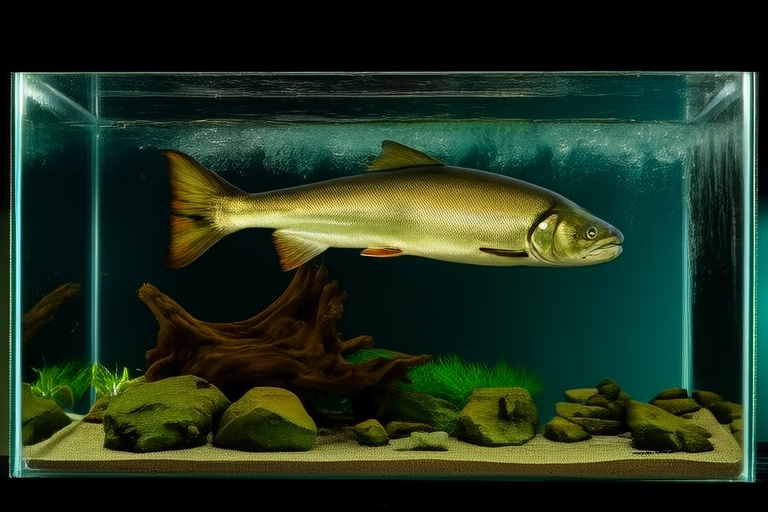Arowana Aquascaping 101: Creating Stunning Underwater Landscapes
Welcome to the fascinating world of arowana aquascaping! Arowanas are majestic freshwater fish known for their striking appearance and graceful movements. These large, predatory fish, native to Southeast Asia, can grow up to 3 feet in length and weigh over 20 pounds. Their behavior is quite unique; they are known for their ability to leap out of the water, which makes them a captivating addition to any aquarium setup. Caring for arowanas requires attention to detail, especially when it comes to their habitat. In this comprehensive guide, we will walk you through the essentials of creating an enchanting underwater landscape that meets the needs of these magnificent creatures.
Understanding Arowanas
Arowanas belong to the Osteoglossidae family and are known for their elongated bodies, large scales, and powerful jaws. They are highly territorial and prefer spacious environments. When considering an arowana as a pet, it’s important to note that they require ample space and specific water conditions to thrive. Arowanas are carnivorous and need a varied diet consisting of live or frozen foods such as shrimp, worms, and small fish. Additionally, they are sensitive to changes in water quality, making regular monitoring of water parameters crucial.
The Basics of Aquascaping
Aquascaping involves designing and maintaining a visually appealing underwater environment for aquatic life. The goal is to create a balanced ecosystem that supports both the fish and the plants. There are three main components to consider when aquascaping for arowanas:
- Hardscape: This includes rocks, driftwood, and other structural elements that add depth and interest to the tank. Hardscape items should be chosen carefully to ensure they are safe for the fish and contribute to the overall aesthetic.
- Softscape: Softscape elements, such as live plants, are essential for oxygenating the water and providing hiding spots for the fish. Selecting the right plants is crucial, as they must be able to withstand the large, active fish.
- Substrate: The type of substrate used can influence the growth of plants and the appearance of the tank. Sand or fine gravel is generally preferred for arowana tanks.
Water Parameters, Filtration, and Lighting
Maintaining optimal water conditions is vital for the health of both the fish and the plants. Arowanas prefer slightly acidic to neutral water with a pH between 6.5 and 7.5. Temperature should be kept between 78°F and 84°F, and the water hardness should be around 5 to 15 dGH. Regular testing of these parameters ensures the well-being of your fish.
Filtration is another critical aspect of arowana aquascaping. High-quality filters capable of handling large volumes of water are necessary to maintain clean, oxygen-rich water. Considerations include the filter’s capacity, flow rate, and the presence of biological media for beneficial bacteria.
Lighting is essential for plant growth and can enhance the visual appeal of the tank. LED lights are popular due to their energy efficiency and customizable color temperatures. Aim for 8-10 hours of light per day, but avoid overly intense lighting that could stress the fish.
Step-by-Step Guide to Setting Up Your Arowana Tank
1. Planning Your Layout
Before adding any elements to the tank, take time to plan your layout. Sketch a design that incorporates the hardscape and softscape elements. Consider the swimming patterns of arowanas and ensure there are open spaces for them to move freely. Aim for a balanced distribution of elements that mimics a natural habitat.
2. Preparing the Tank
Once your design is finalized, begin by cleaning the tank thoroughly. Rinse all hardscape items under running water to remove dust and debris. Fill the tank with water and add the hardscape elements. Arrange rocks and driftwood to create caves, ledges, and other features that provide shelter and visual interest.
3. Planting Softscape Elements
Select hardy, fast-growing plants that can tolerate the presence of large fish. Popular choices include Anubias, Java fern, and Amazon sword plants. Use planting tools to secure the plants in the substrate, ensuring they are firmly anchored. Avoid placing plants too close to each other to prevent overcrowding and allow for proper growth.
4. Adding Fish and Finishing Touches
After setting up the tank and allowing it to cycle, introduce your arowanas gradually. Monitor their behavior and adjust the layout if necessary. Finally, add any decorative elements like ornaments or artificial plants to complete the scene.
Selecting Compatible Plant Species
Choosing the right plants is crucial for a thriving aquascape. Some excellent options for arowana tanks include:
- Anubias: Known for its robustness, Anubias can handle the disturbances caused by large fish. It also provides shade and hiding spots.
- Java Fern: This plant thrives in low-light conditions and doesn’t require soil for anchoring.
- Amazon Sword: A robust, fast-growing plant that adds a lush look to the tank.
Maintenance Tips and Common Mistakes to Avoid
Regular maintenance is key to keeping your arowana tank healthy and beautiful. Perform weekly water changes, monitor water parameters, and trim plants as needed. Avoid overfeeding your fish, which can lead to excess waste and poor water quality. Also, refrain from overcrowding the tank with too many decorations or plants, as this can restrict the fish’s movement.
Inspiration for Creative Aquascaping Designs
For those looking to get creative, consider incorporating themed landscapes into your aquascape. Examples include tropical rainforest scenes with dense vegetation and cascading waterfalls, or desert-inspired setups with sandy substrates and sparse plants. Let your imagination run wild while ensuring the design remains functional for your arowanas.
In conclusion, creating an arowana aquascape is both a rewarding and challenging endeavor. By understanding the needs of these remarkable fish and carefully planning your setup, you can craft a stunning underwater landscape that captivates and inspires. Remember, patience and attention to detail are your best allies in this exciting journey.
